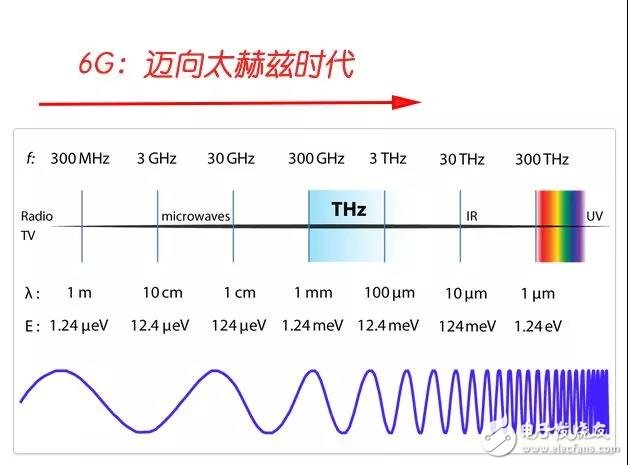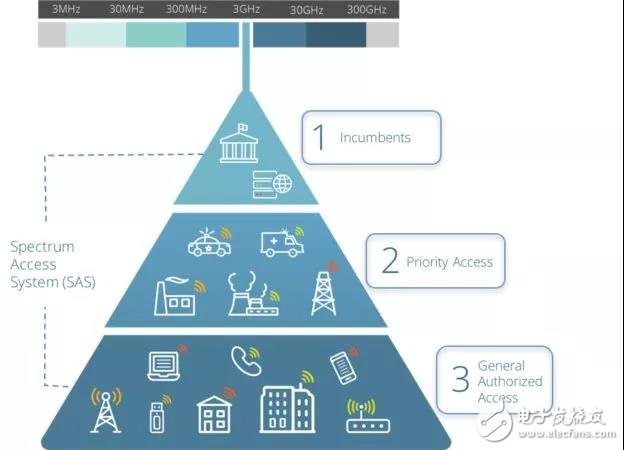It's not that I don't understand, but the world is changing too fast. 5G hasn't rolled out yet, and 6G is here again.
On September 13, at MWCA2018, US FCC officials looked forward to 6G technology in public for the first time.
Jessica Rosenworcel, a member of the FCC (Federal Communications Commission) who has always supported "net neutrality", said in a speech at the Mobile World Congress (MWCA2018) held in Los Angeles this year that 6G will move towards the era of terahertz frequencies. As the network becomes more densified, blockchain-based dynamic spectrum sharing technology is a trend.
This article is mainly based on Rosenworcel's speech content, plus some technical and background descriptions.
Don't say 6G is still earlyRosenworcel exclaimed in his speech that at the MWCA2018 conference, whether it is about the promise of 5G, the advancement of artificial intelligence and virtual reality, or the development of the Internet, this conference makes us full of confidence in the future wireless industry, and we are more convinced than ever The future world belongs to "connection".
Fifteen years ago, Chris Anderson, the author of the world-selling "Long Tail Theory", who is known as the thinker and prophet of the Internet era, published an article in "Wired" prophesying that the era of wireless Internet has arrived.
Fifteen years later, any of us today firmly believe that the era of "all things intelligently connected" has arrived. This is an era in which everything will be connected wirelessly-the 5G era.
5G has arrived. Just like Anderson predicted the future, it is certainly not too early for us to talk about the next generation of 6G technology today.
In fact, a few months ago, Google Trends ranked the word 6G as the 17th most-watched word in search engines. Recently, a Fortune 500 company gave a detailed account of new research on 6G services. At the same time, please note that the Minister of Industry and Information Technology of China has stated that China has already begun to study 6G.
So, we are going to talk about the future of 6G today
6G will move towards the terahertz era, and the network will become denserFrom 1G to 5G, in order to increase speed and capacity, mobile communications will always expand towards more spectrum and higher frequency bands. 5G expands from less than 6GHz to millimeter wave frequency band, 6G will enter the terahertz (THz) era.

The higher the wireless frequency band, the smaller the coverage area. The density of 5G base stations is much higher than that of 4G. In order to improve coverage and network speed, we will introduce Massive MIMO and beamforming technology on 5G base stations.
The 6G frequency band moving towards the terahertz era is even higher, and the density of base stations in the 6G era will not increase. Imagine that in the future, more miniaturized 6G base stations will be densely distributed around us. Each base station will send hundreds of beams at the same time. Is this picture too much like a scene in a science fiction novel?
The demand for wireless spectrum in this world is growing rapidly. On the other hand, as the network becomes more and more dense, the investment cost of network infrastructure is constantly increasing. How to efficiently use spectrum resources and better stimulate social innovation will become a key topic in the 6G era.
6G=blockchain + dynamic spectrum sharing technologyWireless spectrum is a scarce resource and an important carrier to promote continuous innovation in a digital society.
More than 20 years ago, the FCC in the United States created the authorized spectrum auction rules to conduct public auctions on a certain frequency band, and transfer the right to use the frequency band to the highest bidder (operator) by way of open bidding. At that time, this idea was ridiculed by experts and opposed by the industry, but in retrospect, the FCC has held nearly 90 spectrum auctions, issued more than 44,000 spectrum licenses, and raised more than $140 billion in revenue. It now appears that this rule is successful.
However, past success is not always a reference for the future.
The way of authorized spectrum has problems such as idle spectrum and insufficient utilization due to the exclusive use of frequency bands by authorized users, which exacerbates the conflict between spectrum supply and demand. Facing the era of intelligent connection of all things, wireless networks cover all walks of life, and the importance of spectrum resources to economic support is becoming more and more critical. The traditional authorized spectrum allocation method has limitations in the use rights and scope, which is very likely to hinder the entire society from promoting innovation.
To this end, the FCC in the United States promoted dynamic spectrum sharing in 2015, launched CBRS (public wireless broadband service) on 3.5GHz, and dynamically managed different types of wireless traffic through a centralized spectrum access database system to improve the efficiency of spectrum use and stimulate The society innovates together.
CBRS has established a three-layer spectrum shared access system (SAS). Wireless operators using CBRS can deploy 5G networks quickly and easily without obtaining a spectrum license.
The core engine of CBRS is SAS. SAS is actually a spectrum controller based on the cognitive wireless system. It has the management function of the controller in the network that we are all familiar with. It is responsible for coordinating existing military radars, satellite systems and new Spectrum access among commercial users.
The SAS system is divided into three levels: existing services, priority access (PAL) and general authorized access (GAA). Existing services have the highest priority, including satellite communications services and U.S. Navy radar systems that have been authorized on the 3.5GHz frequency band. They will receive the highest level of protection from interference from priority access and ordinary authorized access users; Priority access enjoys protection from interference from ordinary authorized access users; ordinary authorized access has the lowest priority and is not protected from any interference.

The mission of SAS is to protect higher-level users from lower-level users and optimize the effective use of spectrum available to all users in the CBRS frequency band. Therefore, the 150 MHz CBRS spectrum is dynamically shared. The controller maintains a database of all CBRS wireless base stations, including their hierarchical status, geographic location, and other related information to coordinate frequency and transmit power allocation, and monitor and protect the frequency band from potential interference.
According to FCC rules, at least 80 MHz spectrum can be used for general authorized access (GAA) (assuming that there are no existing users), and in some cases, if there are no existing services and priority access users, it can also be in a certain area The complete 150 MHz spectrum is used inside.
SAS is a cloud-based system with programmability and scalability. It is based on a standard open API and supports the operator’s OSS/BSS system interface to integrate billing, management and other business functions.
Rosenworcel said that CBRS is very creative, efficient and forward-looking, but with the development of new technologies, it can also realize smarter and more distributed dynamic spectrum sharing access technology, which is "blockchain + dynamic spectrum sharing". technology.
Blockchain is a distributed database that can be safely updated without a central intermediary. In the future, it is possible to explore the use of blockchain as a low-cost alternative to dynamic spectrum sharing technology, instead of supporting spectrum sharing access through a centralized database. Not only can the management cost of the dynamic spectrum access system be reduced, and the spectrum efficiency can be improved, but also the access level and access users can be further increased.
Rosenworcel believes that the use of a decentralized distributed ledger to record various wireless access information can further stimulate new technological innovations and even change the way the wireless spectrum is used in the future.
Rosenworcel emphasized at the end of the speech that 6G is not as far away as you think. Remember, when Chris Anderson first predicted 15 years ago that the golden age of wireless was coming, people thought it was incredible. But now, almost everyone is using smartphones and mobile internet has been booming for 10 years. Today, no one doubts Chris Anderson’s predictions. However, facing the 6G era, spectrum rule makers should re-examine some of the past practices and prepare for the future.
Yuchai 21-75KW Diesel Generator
Yuchai 21-75Kw Diesel Generator,Yuchai Container Power Generator,Yuchai Portable Power Generator,Yuchai Open Type Power Generator
Shanghai Kosta Electric Co., Ltd. , https://www.generatorksd.com
